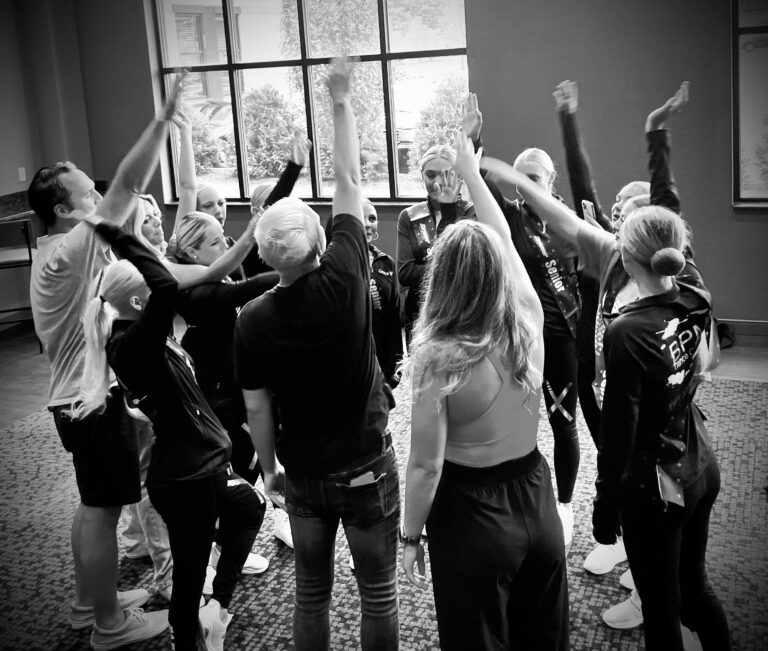
One of the most beautiful and challenging aspects of the art of dance is its constant evolution. Dancers push their bodies relentlessly to master their craft, and with this increase in output, the risks to their bodies are higher than ever before. Dancers are athletes. Period. Yet while other sports have scientifically tested standards of training, a gap of governance in dance has resulted in twice as many injuries from the knee down as football.
I built a career as a professional dancer, choreographer, convention teacher and mentor, but after sustaining multiple injuries, I was told I may have to give it all up. It was like being told not to breathe. I used to have the same mind-set as many dancers, convinced I was doing everything possible to protect my body. Then I spent four long years in rehab for injuries that, looking back, were completely preventable. Now it is my mission to teach the next generation of dancers what I wish I had known then.
I remember the moment I first felt my knee pop. I didn’t stop. I fought through it. While dancing you have so much passion, adrenaline and focus that you don’t feel pain. That doesn’t stop your body from degenerating off stage. I went through the same cycle for years: injury, surgery, rehab, getting back to dancing before my body was ready, and repeating. This is what dancers are told to do. After four years, my body finally broke down, and I had to either start listening to my body or stop dancing forever, giving up what I knew I was destined to do. For me, and countless others, there is no “plan B.” This is what I’m meant to do for the rest of my life. I just needed to learn how to make it possible. I asked myself, “What does my body need?”
I started shadowing my physical therapist, Dr. Nick Cutri, who founded Sugarfoot Therapy, and my surgeon, Dr. Bert Mandelbaum, the orthopedic doctor for Olympic athletes. I wanted to know everything about how my body works and what I could do to prevent future injury, because I never wanted to go through this again.
I believe my journey, though extremely painful, served a purpose. It thrust me into a bigger conversation in the dance community, advocating for dancers to ask why we continue traditions that increase the risk of injury, and challenging them to treat their bodies like the athletes they are.
Looking back, I would have changed the simplest things. Cross-training a couple times a week. Warming up properly. Nourishing my body with a nutritional diet. You don’t have to completely reconstruct everything you know to become a healthy dancer and athlete. Little things can add up to a huge transformation.
Since joining this movement, I’ve discovered tools, training and fellow advocates that are aligned in my mission. For example, Sugarfoot Therapy’s online sessions simplify training methods and help you understand why you need them. Apolla Shocks are finally pioneering supportive footwear for dancers, and I immediately felt the difference in my arches and ankles when I started wearing them in rehab. Now, they are my go-to dance footwear. I use T Spheres to massage those tight areas where the muscles connect to their ligaments and tendons, and cryotherapy has been the only therapy that truly reduces my inflammation. I also make sure that I have a healthy diet, rich in protein to prevent muscle atrophy. Find a doctor you trust who can help you learn your body.
There is a stereotype that dancers have inordinately short careers, but why is that? In our current culture of dance, we can’t admit we’re hurt, because it’s been made to be a sign of weakness. We need to empower our young dancers to build on their strengths and learn how to listen to their bodies when necessary. We can reduce this epidemic of injuries. As parents, mentors and teachers, we have the power to effect that change, and we owe it to our young dancers to give them solid, well-rounded foundations that will develop into beautiful, healthy, long careers. If you could give them the ability to be safe and healthy, you would do that, wouldn’t you? Dance teachers are currently molding some of the most epic dancers of all time. It is incredible how our art has evolved, and I can’t wait to see where it goes. However, I challenge you to learn from my mistakes. Don’t send your dancers down the same path of chronic pain and tennis-shoe-ridden teaching that we all suffer from as adult dancers. Let’s rise as the artists and athletes that we are and give dance the bright future it deserves.



